Mosquito Bites vs Hives: Understanding Allergic Reactions and Prevention
Are mosquito bites causing unusual reactions. How can you differentiate between normal bites and allergic responses. What are the most effective ways to prevent and treat mosquito bites. When should you seek medical attention for mosquito bite reactions.
The Science Behind Mosquito Bites: Why Do They Itch?
Mosquito bites are a common nuisance, but understanding the science behind them can help us better manage their effects. Female mosquitoes require blood meals to reproduce, and during the biting process, they release saliva into our skin. This saliva contains various compounds that can trigger an immune response in humans.
The itching and swelling associated with mosquito bites are actually allergic reactions to the proteins in mosquito saliva. When these proteins enter our bloodstream, our immune system recognizes them as foreign invaders and releases histamines to combat them. This histamine release causes the characteristic itching, redness, and swelling we associate with mosquito bites.

How long do mosquito bites typically itch?
For most people, mosquito bites will clear up on their own within a few days. The itching sensation usually peaks within the first 24 to 48 hours after the bite occurs. However, if you notice that a bite is still causing significant discomfort after a week or two, it’s advisable to consult a medical professional, as this could indicate a more severe reaction or potential infection.
Mosquito Bite Allergies: From Mild to Severe Reactions
While many people experience mild allergic reactions to mosquito bites, some individuals may have more severe responses. It’s important to recognize the difference between a typical reaction and a potentially dangerous allergic response.
What are the signs of a severe mosquito bite allergy?
According to the American Academy of Allergy, Asthma & Immunology (AAAAI), severe reactions to mosquito bites can include:
- Blistering lesions
- Large hives
- Fever
- Joint swelling
In extremely rare cases, individuals with severe mosquito allergies may experience anaphylaxis, a life-threatening condition characterized by:
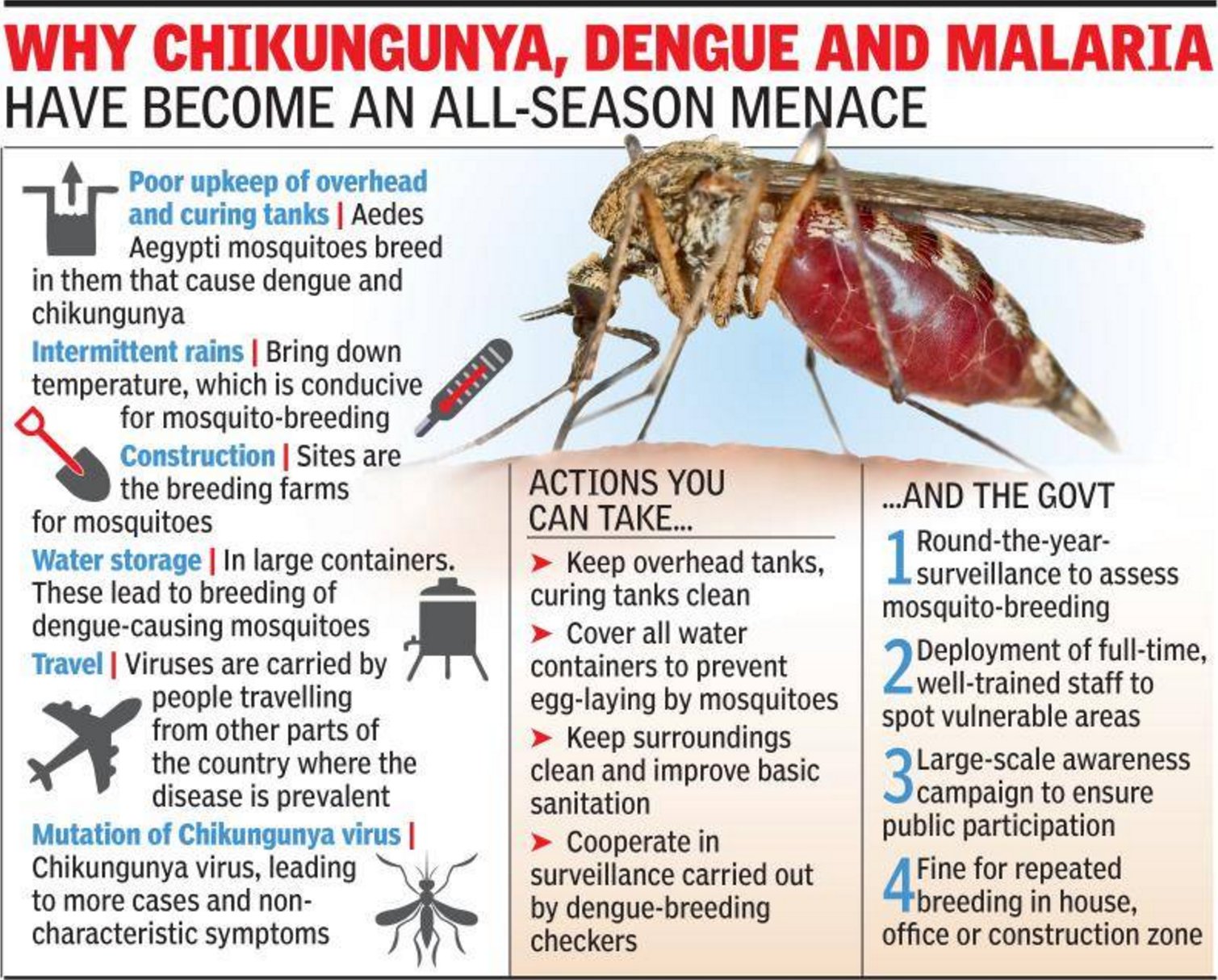
- Throat swelling
- Generalized hives
- Faintness
- Wheezing
If you or someone around you experiences these symptoms after a mosquito bite, seek emergency medical attention immediately.
Treating Mosquito Bites: From Home Remedies to Medical Interventions
For most people, treating mosquito bites can be done effectively at home. However, knowing when to seek medical attention is crucial for those with more severe reactions.
What are the most effective ways to treat mosquito bites at home?
The AAAAI recommends the following treatments for localized mosquito bite reactions:
- Elevate the affected area and apply ice to reduce swelling and pain.
- Use over-the-counter anti-itch lotions or creams.
- Clean any blisters with soap and water, but avoid breaking them.
- If itching persists, try topical steroids or oral antihistamines.
- For persistent swelling or signs of infection, consult a physician.
It’s important to resist the urge to scratch mosquito bites, as this can lead to skin damage and increase the risk of infection.
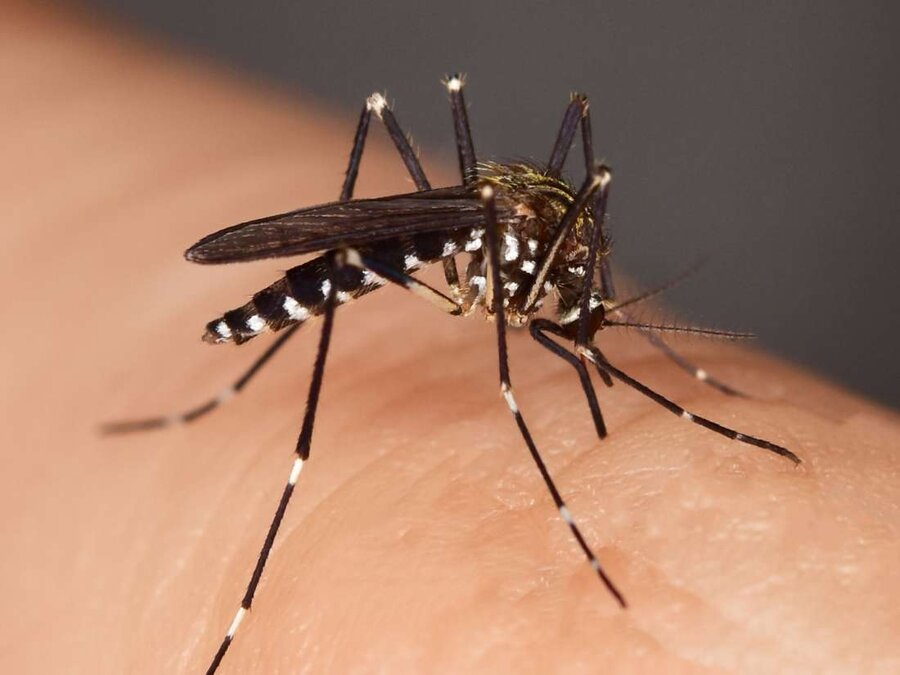
Mosquito Bite Prevention: Strategies for Reducing Exposure
While treating mosquito bites is important, preventing them in the first place is even better. There are several steps you can take to reduce mosquito populations around your home and protect yourself from bites.
How can you effectively reduce mosquito populations in your yard?
To minimize mosquito breeding grounds and reduce their presence in your outdoor spaces, consider the following strategies:
- Eliminate standing water sources, such as clogged gutters, birdbaths, and unused containers.
- Keep gutters and drains clear to prevent water accumulation.
- Maintain a well-kept yard by regularly mowing the lawn and trimming vegetation.
- Use mosquito repellents recommended by the Centers for Disease Control and Prevention (CDC) when spending time outdoors.
- Consider installing or repairing screens on windows and doors to keep mosquitoes out of your home.
For more persistent mosquito problems, consulting with a professional pest control service may be necessary to implement targeted control measures.
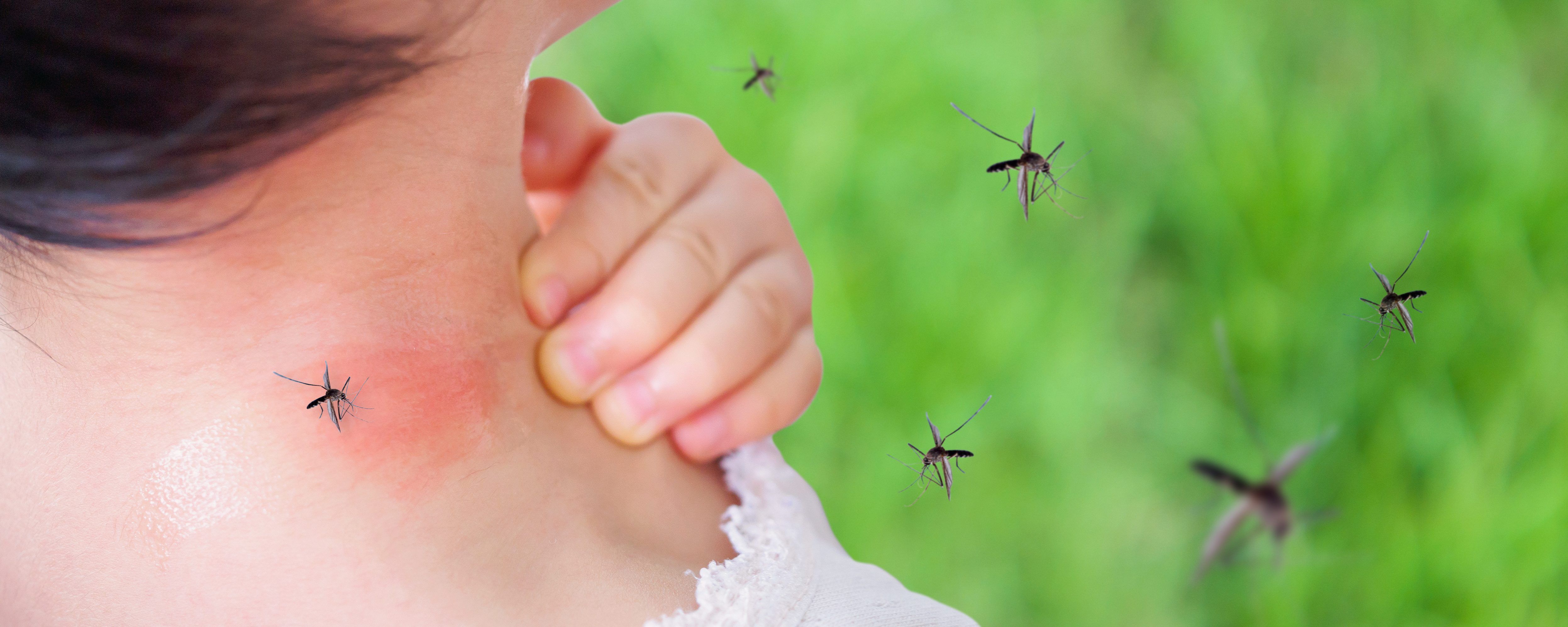
The Mosquito Life Cycle: Understanding Their Rapid Reproduction
Mosquitoes are known for their ability to reproduce quickly, which can make controlling their populations challenging. Understanding their life cycle can help in developing more effective prevention strategies.
How quickly can mosquitoes reproduce?
Mosquitoes have a rapid breeding cycle, with some species capable of producing up to 3,000 eggs in just a few weeks. This high reproductive rate means that even small amounts of standing water can quickly become breeding grounds for large mosquito populations.
The mosquito life cycle consists of four stages:
- Egg: Laid in or near water
- Larva: Aquatic stage, requires water to survive
- Pupa: Transitional stage between larva and adult
- Adult: Flying, biting stage
The entire cycle, from egg to adult, can be completed in as little as 7-10 days under optimal conditions. This rapid development underscores the importance of consistent and thorough mosquito control efforts.
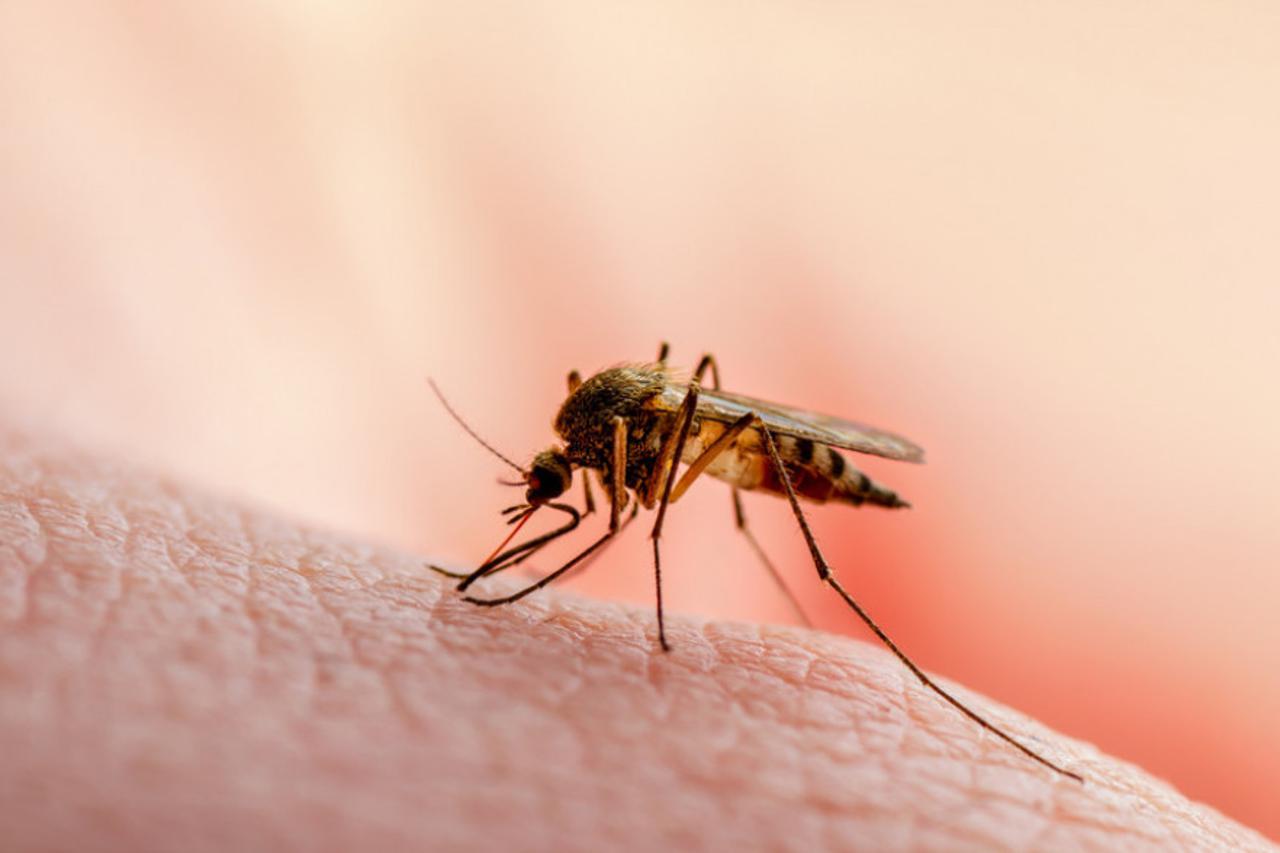
Mosquito-Borne Diseases: Understanding the Health Risks
While mosquito bites are often merely annoying, these insects can also transmit a variety of serious diseases. Understanding these risks can help motivate more rigorous prevention efforts.
What are some of the most common mosquito-borne diseases?
Mosquitoes are capable of transmitting various pathogens that can cause human diseases, including:
- Malaria
- Dengue fever
- Zika virus
- West Nile virus
- Chikungunya
- Yellow fever
While not all mosquitoes carry these diseases, and transmission rates vary by region, the potential health risks underscore the importance of mosquito control and personal protection measures.
Innovative Mosquito Control Technologies: Looking to the Future
As mosquitoes continue to pose health risks and nuisances worldwide, researchers and companies are developing new technologies to control their populations more effectively and sustainably.
What are some promising new approaches to mosquito control?
Several innovative technologies are being explored or implemented for mosquito control:
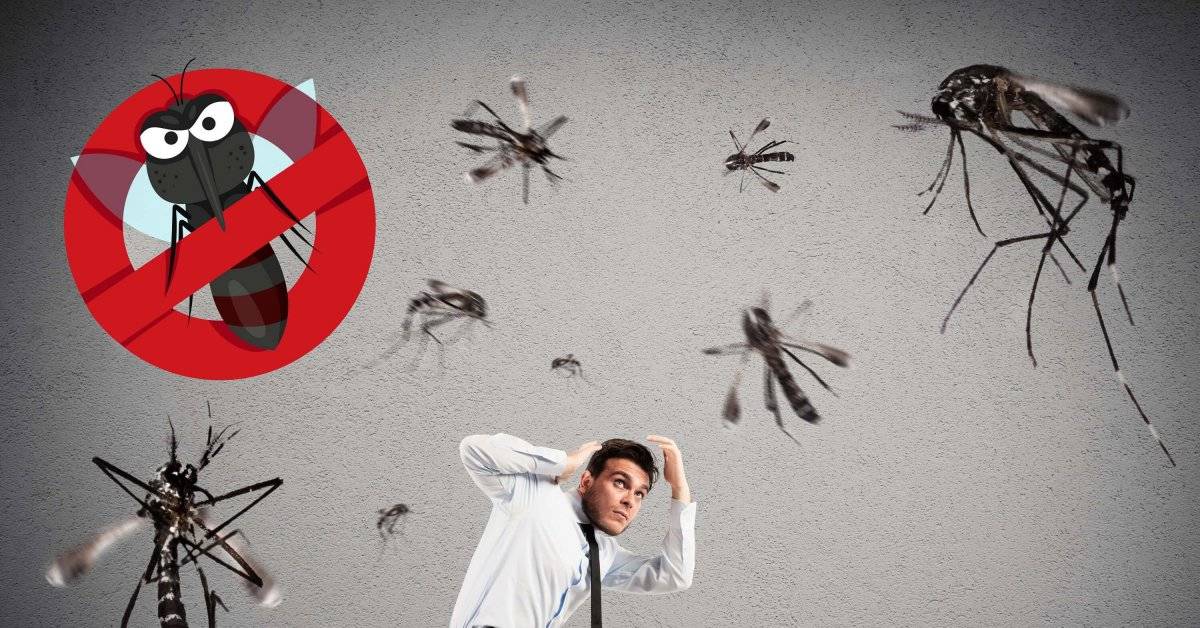
- Gene drive techniques: Modifying mosquito genetics to reduce populations or disease transmission capabilities.
- Sterile insect technique: Releasing sterilized male mosquitoes to reduce breeding.
- Biological control: Using natural predators or pathogens to control mosquito populations.
- Smart traps: Developing advanced traps that can selectively target specific mosquito species.
- Repellent innovations: Creating long-lasting, environmentally friendly repellents.
These approaches aim to provide more targeted, efficient, and environmentally sustainable methods of mosquito control compared to traditional insecticide-based approaches.
Global Impact of Mosquitoes: Economic and Health Consequences
The impact of mosquitoes extends far beyond personal discomfort, affecting global health and economics on a massive scale.
How do mosquitoes affect global health and economics?
Mosquitoes and the diseases they transmit have significant worldwide consequences:
- Health impact: Mosquito-borne diseases cause hundreds of thousands of deaths annually, with malaria alone responsible for over 400,000 deaths per year.
- Economic burden: The cost of treating mosquito-borne diseases and implementing control measures runs into billions of dollars annually.
- Productivity loss: Illness and deaths from mosquito-borne diseases result in substantial losses in workforce productivity, particularly in endemic regions.
- Tourism impact: Fear of mosquito-borne diseases can negatively affect tourism in certain regions, impacting local economies.
These far-reaching effects highlight the importance of continued research, prevention efforts, and global cooperation in mosquito control strategies.

Understanding the complexities of mosquito bites, from the basic science of why they itch to the global impact of mosquito-borne diseases, empowers us to take more effective prevention and control measures. Whether you’re dealing with a simple backyard nuisance or concerned about more serious health risks, knowledge is key in managing the mosquito menace. By implementing preventive strategies, recognizing the signs of severe reactions, and staying informed about innovative control methods, we can better protect ourselves and our communities from the various challenges posed by these tiny but impactful insects.
Are You Allergic to Mosquito Bites?
Learn some facts about mosquito bite reactions, as well as signs that you may have a severe allergy to mosquitoes.
A Typical Mosquito Bite Reaction
Like bed bugs, female mosquitoes need to have a blood meal before they can reproduce. When a mosquito bites you, she releases saliva that can cause clotting and scabbing. Many people are allergic to the substances contained in the mosquito’s saliva, which is why they start to itch and develop small welts. So, technically, a lot of people are allergic to mosquito bites, but some people may have more serious reactions than others.
How Long Do Mosquito Bites Itch?
While mosquito bites may seem like they’ll never stop itching, they usually clear up on their own after a few days, according to the Mayo Clinic. Therefore, if you have a bite that lasts longer than that — say a week or two — it’s recommended to go see a qualified medical professional.
Why Do Mosquito Bites Ooze?
When it comes to mosquito bites, oozing isn’t really common. And when a mosquito bite does ooze, it really has nothing to do with the bite, but rather how much you scratch it. Oozing comes from the infection, not really the bite.
And when a mosquito bite does ooze, it really has nothing to do with the bite, but rather how much you scratch it. Oozing comes from the infection, not really the bite.
What Are the Symptoms of a Severe Mosquito Bite Reaction?
According to the American Academy of Allergy, Asthma & Immunology (AAAAI), some people can have more serious reactions like blistering lesions or large hives accompanied by fever and joint swelling.
Though extremely rare, the AAAAI also states people who are severely allergic to mosquito bites may experience a potentially life-threatening condition called anaphylaxis. This condition is characterized by throat swelling, generalized hives, faintness or wheezing.
How to Treat a Mosquito Bite
First things first when it comes to treatment, the AAAAI says to seek emergency medical treatment if you or someone you’re with develops anaphylactic symptoms. Additionally, the Mayo Clinic states you should contact your doctor if a mosquito bite seems to be associated with more serious warning signs, like fever, headache, body aches and signs of infection.
As for localized mosquito bite reactions, the AAAAI suggests the following treatment:
- Elevate the affected area and apply ice to reduce swelling and pain.
- Apply over-the-counter lotion to the affected area.
- Clean blisters with soap and water without breaking them.
- If itching persists, try topical steroids or oral antihistamines.
- Consult a physician if the swelling progresses or the area appears infected.
Chances are good that if you have a severe reaction to mosquito bites, you’d already know it. If you’re concerned about a reaction to a mosquito bite, you should contact a medical professional.
Why Do Mosquitoes Feed on Your Blood?
Ways to Help Prevent Mosquito Bites
Fortunately, most reactions to mosquito bites are mild. Still, mosquitoes and their bites can be a big nuisance. There are some steps that you can take around your home to help you reduce the mosquito population so you can enjoy being outdoors with your family.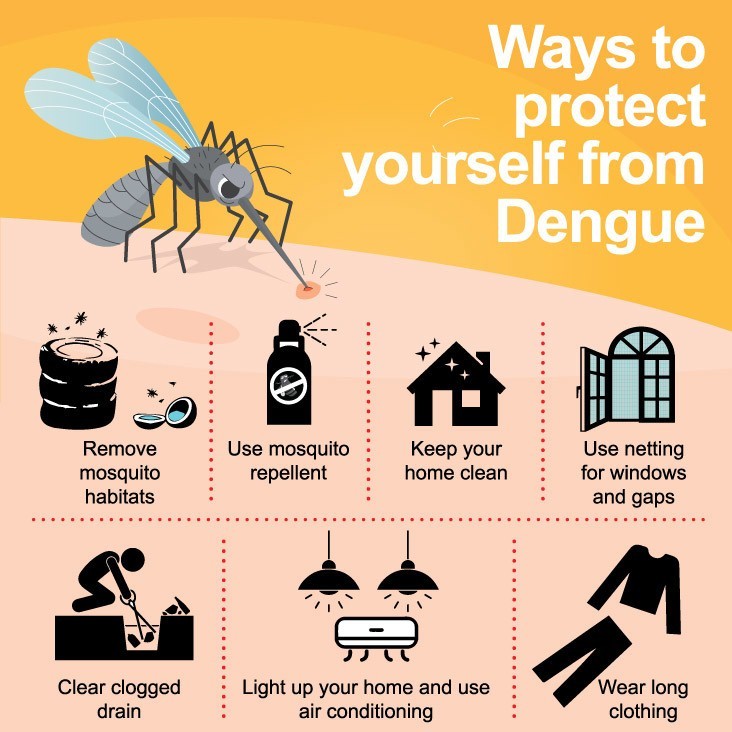 These steps include:
These steps include:
- Getting rid of standing water
- Keeping gutters and drains clear
- Maintaining a well-kept yard
- Using a mosquito repellent recommended by the Centers for Disease Control and Prevention
Mosquitoes can be tough to control. They breed rapidly, with groups of mosquitoes producing up to 3,000 eggs in a few weeks. Do-it-yourself methods of control can be costly and ineffective. Though they can sometimes help reduce adult mosquito populations, they often miss the egg population, so the problem isn’t actually addressed.
If you’ve noticed mosquitoes in your yard, you may need to consult a professional to help solve the problem. The mosquito control professionals at Terminix® can inspect your yard for conditions that are conducive to mosquito populations and recommend treatment methods. Contact Terminix today to learn more about our mosquito service.
Learn more on how you can prepare for mosquito season.
Update on mosquito bite reaction: Itch and hypersensitivity, pathophysiology, prevention, and treatment
1.
Seda J, Horrall S. Mosquito bites. In: StatPearls. Treasure Island (FL: StatPearls Publishing; (2021). [PubMed] [Google Scholar]
2.
Rueda LM. Global diversity of mosquitoes (Insecta: Diptera: Culicidae) in freshwater. Hydrobiologia (2008) 595:477–87. doi: 10.1007/s10750-007-9037-x
[CrossRef] [Google Scholar]
3.
Jung SH, Kim D, Jung KS, Lee DK. Color preference for host-seeking activity of aedes albopictus and culex pipiens (Diptera: Culicidae). J Med Entomol (2021) 58(6):2446–52. doi: 10.1093/jme/tjab100
[PubMed] [CrossRef] [Google Scholar]
4.
Zhou YH, Zhang ZW, Fu YF, Zhang GC, Yuan S. Carbon dioxide, odorants, heat and visible cues affect wild mosquito landing in open spaces. Front Behav Neurosci (2018) 12:86. doi: 10.3389/fnbeh.2018.00086
[PMC free article] [PubMed] [CrossRef] [Google Scholar]
5.
Caraballo H, King K. Emergency department management of mosquito-borne illness: malaria, dengue, and West Nile virus.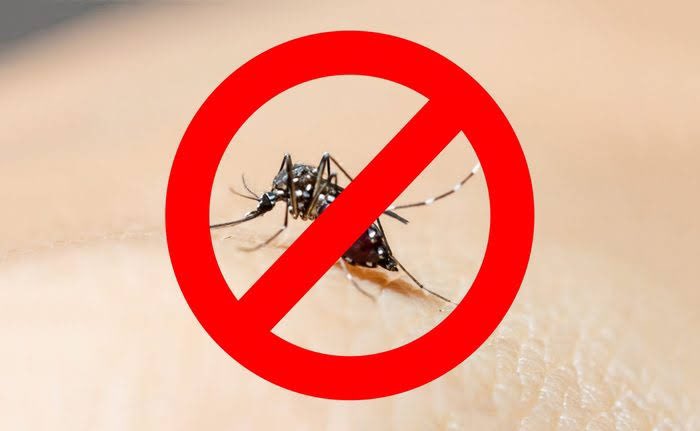 Emerg Med Pract (2014) 16(5):1–24. [PubMed] [Google Scholar]
Emerg Med Pract (2014) 16(5):1–24. [PubMed] [Google Scholar]
6.
Mellanby K. Man’s reaction to mosquito bites. Nature (1946) 158:554. doi: 10.1038/158554c0
[PubMed] [CrossRef] [Google Scholar]
7.
Reunala T, Brummer-Korvenkontio H, Lappalainen P, Räsänen L, Palosuo T. Immunology and treatment of mosquito bites. Clin Exp Allergy (1990) 20(Suppl 4):19–24. doi: 10.1111/j.1365-2222.1990.tb02472.x
[PubMed] [CrossRef] [Google Scholar]
8.
Peng Z, Yang M, Simons FE. Immunologic mechanisms in mosquito allergy: correlation of skin reactions with specific IgE and IgG antibodies and lymphocyte proliferation response to mosquito antigens. Ann Allergy Asthma Immunol (1996) 77(3):238–44. doi: 10.1016/S1081-1206(10)63262-0
[PubMed] [CrossRef] [Google Scholar]
9.
Heilesen B. Studies on mosquito bites. Acta Allergol (1949) 2(3):245–67. doi: 10.1111/j.1398-9995.1949.tb03310.x
[PubMed] [CrossRef] [Google Scholar]
10.
Peng Z, Simons FE. Mosquito allergy: immune mechanisms and recombinant salivary allergens.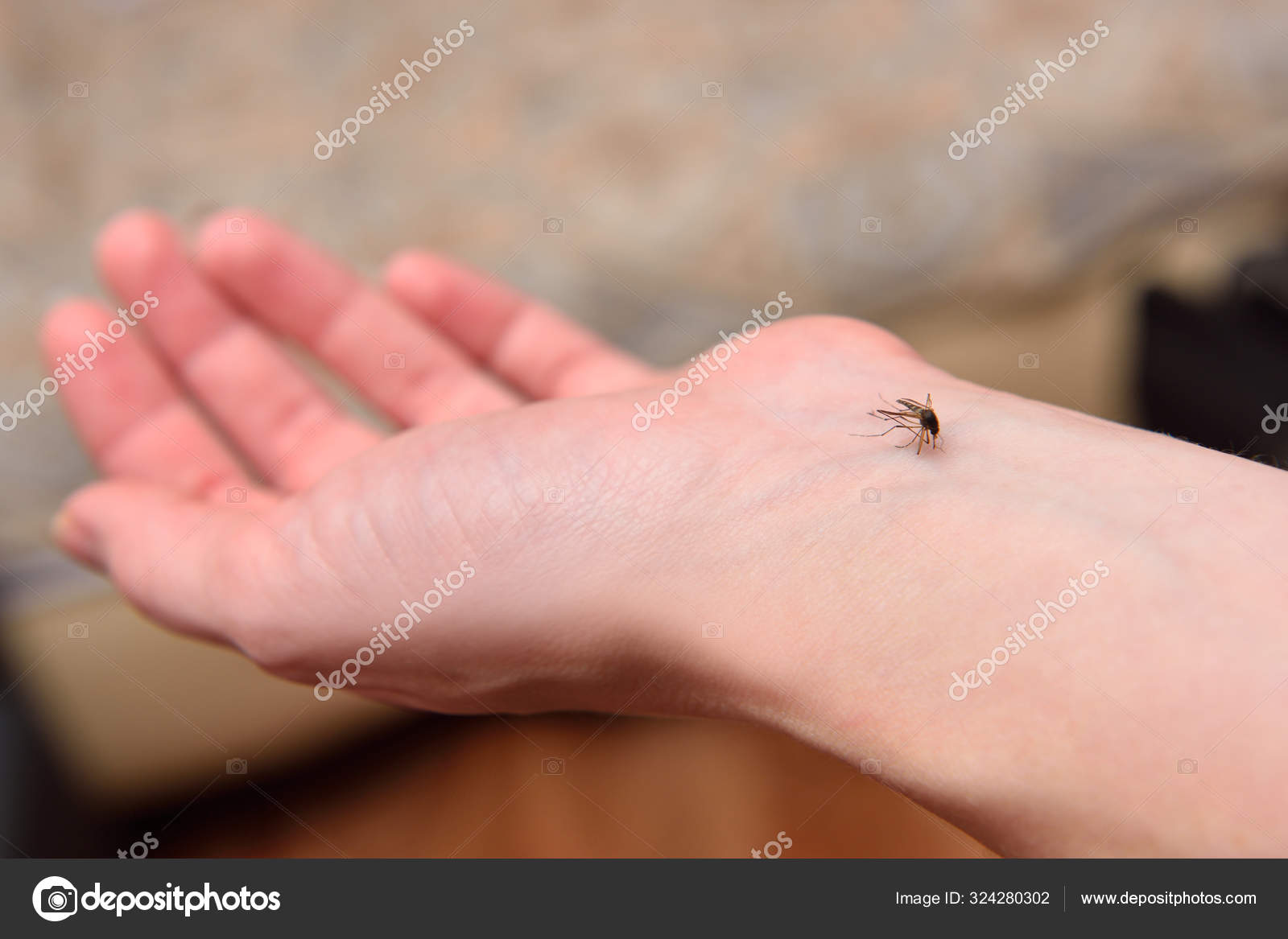 Int Arch Allergy Immunol (2004) 133(2):198–209. doi: 10.1159/000076787
Int Arch Allergy Immunol (2004) 133(2):198–209. doi: 10.1159/000076787
[PubMed] [CrossRef] [Google Scholar]
11.
Oka K, Ohtaki N, Igawa K, Yokozeki H. Study on the correlation between age and changes in mosquito bite response. J Dermatol (2018) 45(12):1471–4. doi: 10.1111/1346-8138.14688
[PubMed] [CrossRef] [Google Scholar]
12.
Ariano R, Panzani RC. Efficacy and safety of specific immunotherapy to mosquito bites. Eur Ann Allergy Clin Immunol (2004) 36(4):131–8. [PubMed] [Google Scholar]
13.
Jones AV, Tilley M, Gutteridge A, Hyde C, Nagle M, Ziemek D, et al.. GWAS of self-reported mosquito bite size, itch intensity and attractiveness to mosquitoes implicates immune-related predisposition loci. Hum Mol Genet (2017) 26:1391–406. doi: 10.1093/hmg/ddx036
[PMC free article] [PubMed] [CrossRef] [Google Scholar]
14.
He A, Brasil P, Siqueira AM, Calvet GA, Kwatra SG. The emerging zika virus threat: A guide for dermatologists. Am J Clin Dermatol (2017) 18(2):231–6. doi: 10.1007/s40257-016-0243-z
doi: 10.1007/s40257-016-0243-z
[PubMed] [CrossRef] [Google Scholar]
15.
Ferguson DD, Gershman K, LeBailly A, Petersen LR. Characteristics of the rash associated with West Nile virus fever. Clin Infect Dis (2005) 41(8):1204–7. doi: 10.1086/444506
[PubMed] [CrossRef] [Google Scholar]
16.
Cunha BA, Leonichev VB, Raza M. Chikungunya fever presenting with protracted severe pruritus. IDCases (2016) 6:29–30. doi: 10.1016/j.idcr.2016.09.003
[PMC free article] [PubMed] [CrossRef] [Google Scholar]
17.
Huang HW, Tseng HC, Lee CH, Chuang HY, Lin SH. Clinical significance of skin rash in dengue fever: A focus on discomfort, complications, and disease outcome. Asian Pac J Trop Med (2016) 9(7):713–8. doi: 10.1016/j.apjtm.2016.05.013
[PubMed] [CrossRef] [Google Scholar]
18.
Aghahowa SE, Obianwu HO, Isah AO, Arhewoh IM. Chloroquine-induced pruritus. Indian J Pharm Sci (2010) 72(3):283–9. doi: 10.4103/0250-474X.70471
[PMC free article] [PubMed] [CrossRef] [Google Scholar]
19.
McBride CS. Genes and odors underlying the recent evolution of mosquito preference for humans. Curr Biol (2016) 26(1):R41–6. doi: 10.1016/j.cub.2015.11.032
[PMC free article] [PubMed] [CrossRef] [Google Scholar]
20.
Khan AA, Maibach HI, Strauss WG. A quantitative study of variation in mosquito response and host attractiveness. J Med Entomol (1971) 8(1):41–3. doi: 10.1093/jmedent/8.1.41
[PubMed] [CrossRef] [Google Scholar]
21.
Kirk KM, Eaves LJ, Meyer JM, Saul A, Martin NG. Twin study of adolescent genetic susceptibility to mosquito bites using ordinal and comparative rating data. Genet Epidemiol (2000) 19(2):178–90. doi: 10.1002/1098-2272(200009)19:2<178::AID-GEPI5>3.0.CO;2-3
[PubMed] [CrossRef] [Google Scholar]
22.
Qiu YT, Smallegange RC, Van Loon JJ, Ter Braak CJ, Takken W. Interindividual variation in the attractiveness of human odours to the malaria mosquito anopheles gambiae s. s. Med Vet Entomol (2006) 20(3):280–7. doi: 10.1111/j.1365-2915.2006.00627. x
x
[PubMed] [CrossRef] [Google Scholar]
23.
Fernández-Grandon GM, Gezan SA, Armour JA, Pickett JA, Logan JG. Heritability of attractiveness to mosquitoes. PloS One (2015) 10(4):e0122716. doi: 10.1371/journal.pone.0122716
[PMC free article] [PubMed] [CrossRef] [Google Scholar]
24.
Verhulst NO, Beijleveld H, Qiu YT, Maliepaard C, Verduyn W, Haasnoot GW, et al.. Relation between HLA genes, human skin volatiles and attractiveness of humans to malaria mosquitoes. Infect Genet Evol (2013) 18:87–93. doi: 10.1016/j.meegid.2013.05.009
[PubMed] [CrossRef] [Google Scholar]
25.
Lucas-Barbosa D, DeGennaro M, Mathis A, Verhulst NO. Skin bacterial volatiles: propelling the future of vector control. Trends Parasitol (2022) 38(1):15–22. doi: 10.1016/j.pt.2021.08.010
[PubMed] [CrossRef] [Google Scholar]
26.
Michalet S, Minard G, Chevalier W, Meiffren G, Saucereau Y, Tran Van V, et al.. Identification of human skin bacteria attractive to the Asian tiger mosquito. Environ Microbiol (2019) 21(12):4662–74. doi: 10.1111/1462-2920.14793
doi: 10.1111/1462-2920.14793
[PubMed] [CrossRef] [Google Scholar]
27.
Zhang X, Crippen TL, Coates CJ, Wood TK, Tomberlin JK. Effect of quorum sensing by staphylococcus epidermidis on the attraction response of female adult yellow fever mosquitoes, aedes aegypti aegypti (Linnaeus) (Diptera: Culicidae), to a blood-feeding source. PloS One (2015) 10(12):e0143950. doi: 10.1371/journal.pone.0143950
[PMC free article] [PubMed] [CrossRef] [Google Scholar]
28.
Verhulst NO, Qiu YT, Beijleveld H, Maliepaard C, Knights D, Schulz S, et al.. Composition of human skin microbiota affects attractiveness to malaria mosquitoes. PloS One (2011) 6(12):e28991. doi: 10.1371/journal.pone.0028991
[PMC free article] [PubMed] [CrossRef] [Google Scholar]
29.
Fostini AC, Golpanian RS, Rosen JD, Xue RD, Yosipovitch G. Beat the bite: pathophysiology and management of itch in mosquito bites. Itch (2019) 4(1):19. doi: 10.1097/itx.0000000000000019
[CrossRef] [Google Scholar]
30.
Hassan I, Haji MLI.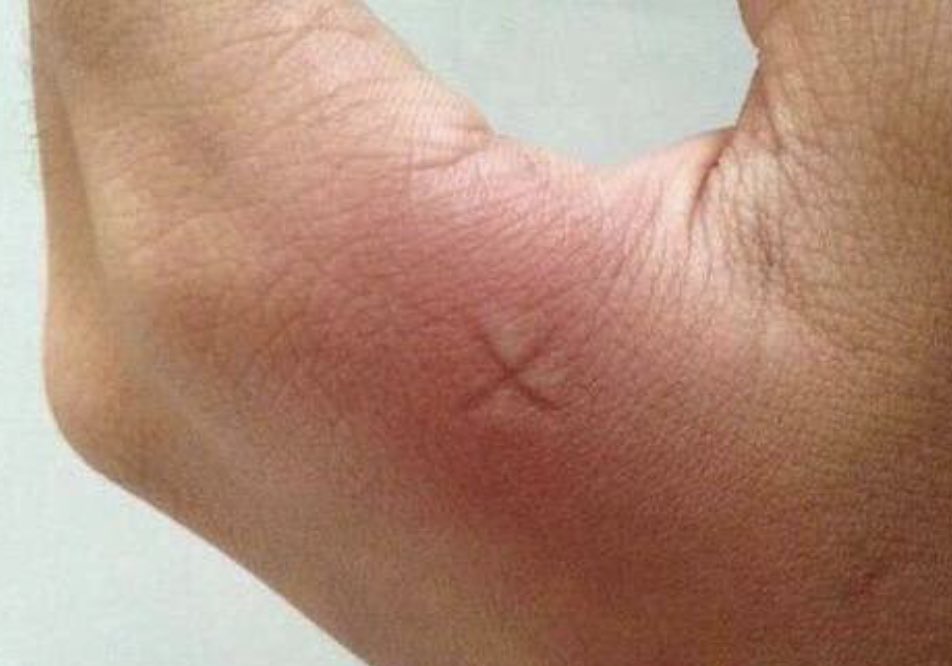 Understanding itch: an update on mediators and mechanisms of pruritus. Indian J Dermatol Venereol Leprol (2014) 80:106–14. doi: 10.4103/0378-6323.129377
Understanding itch: an update on mediators and mechanisms of pruritus. Indian J Dermatol Venereol Leprol (2014) 80:106–14. doi: 10.4103/0378-6323.129377
[PubMed] [CrossRef] [Google Scholar]
31.
Opasawatchai A, Yolwong W, Thuncharoen W, Inrueangsri N, Itsaradisaikul S, Sasisakulporn C, et al.. Novel salivary gland allergens from tropical mosquito species and IgE reactivity in allergic patients. World Allergy Organ J (2020) 13(2):100099. doi: 10.1016/j.waojou.2020.100099
[PMC free article] [PubMed] [CrossRef] [Google Scholar]
32.
Calvo E, Mans BJ, Ribeiro JM, Andersen JF. Multifunctionality and mechanism of ligand binding in a mosquito antiinflammatory protein. Proc Natl Acad Sci USA (2009) 106(10):3728–33. doi: 10.1073/pnas.0813190106
[PMC free article] [PubMed] [CrossRef] [Google Scholar]
33.
Kuraishi Y, Ohtsuka E, Nakano T, Kawai S, Andoh T, Nojima H, et al.. Possible involvement of 5-lipoxygenase metabolite in itch-associated response of mosquito allergy in mice. J Pharmacol Sci (2007) 105:41–7. doi: 10.1254/jphs.FP0070404
J Pharmacol Sci (2007) 105:41–7. doi: 10.1254/jphs.FP0070404
[PubMed] [CrossRef] [Google Scholar]
34.
Demeure CE, Brahimi K, Hacini F, Marchand F, Péronet R, Huerre M, et al.. Anopheles mosquito bites activate cutaneous mast cells leading to a local inflammatory response and lymph node hyperplasia. J Immunol (2005) 174(7):3932–40. doi: 10.4049/jimmunol.174.7.3932
[PubMed] [CrossRef] [Google Scholar]
35.
Boppana VD, Thangamani S, Adler AJ, Wikel SK. SAAG-4 is a novel mosquito salivary protein that programmes host CD4+ T cells to express IL-4. Parasit Immunol (2009) 31:287–95. doi: 10.1111/j.1365-3024.2009.01096.x
[PMC free article] [PubMed] [CrossRef] [Google Scholar]
36.
Zeidner NS, Dolan MC, Massung R, Piesman J, Fish D. Coinfection with borrelia burgdorferi and the agent of human granulocytic ehrlichiosis suppresses IL-2 and IFNγ production and promotes an IL-4 response in C3H/HeJ mice. Parasit Immunol (2000) 22:581–8. doi: 10.1046/j.1365-3024.2000.00339.x
[PubMed] [CrossRef] [Google Scholar]
37.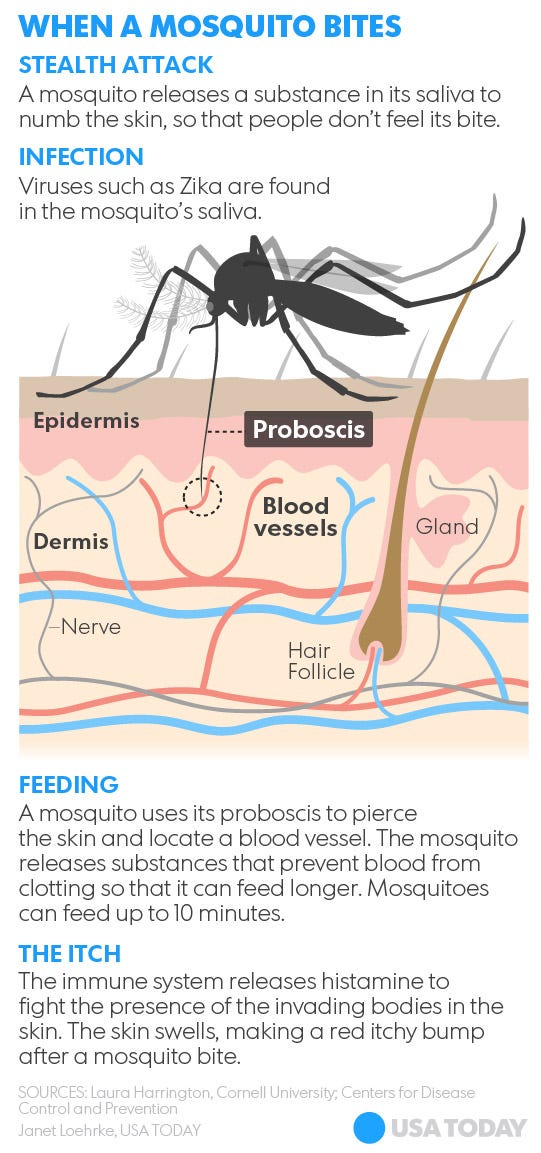
Storan ER, O’Gorman SM, McDonald ID, Steinhoff M. Role of cytokines and chemokines in itch. Handb Exp Pharmacol (2015) 226:163–76. doi: 10.1007/978-3-662-44605-8_9
[PubMed] [CrossRef] [Google Scholar]
38.
Namkung JH, Lee JE, Kim E, Cho HJ, Kim S, Shin ES, et al.. IL-5 and IL-5 receptor alpha polymorphisms are associated with atopic dermatitis in koreans. Allergy (2007) 62:934–42. doi: 10.1111/j.1398-9995.2007.01445.x
[PubMed] [CrossRef] [Google Scholar]
39.
Kimura M, Tsuruta S, Yoshida T. Correlation of house dust mite–specific lymphocyte proliferation with IL-5 production, eosinophilia, and the severity of symptoms in infants with atopic dermatitis. J Allergy Clin Immunol (1998) 101:84–9. doi: 10.1016/S0091-6749(98)70197-6
[PubMed] [CrossRef] [Google Scholar]
40.
Gandhi NA, Pirozzi G, Graham NM. Commonality of the IL-4/IL-13 pathway in atopic diseases. Expert Rev Clin Immunol (2017) 13:425–37. doi: 10.1080/1744666X.2017.1298443
[PubMed] [CrossRef] [Google Scholar]
41.
Peng Z, Simons F, Estelle R. Advances in mosquito allergy. Curr Opin Allergy Clin Immunol (2007) 7(4):350–4. doi: 10.1097/ACI.0b013e328259c313
[PubMed] [CrossRef] [Google Scholar]
42.
Steen CJ, Carbonaro PA, Schwartz RA. Arthropods in dermatology. J Am Acad Dermatol (2004) 50(6):819–42. doi: 10.1016/j.jaad.2003.12.019
[PubMed] [CrossRef] [Google Scholar]
43.
Simons FE, Peng Z. Skeeter syndrome. J Allergy Clin Immunol (1999) 104(3 Pt 1):705–7. doi: 10.1016/s0091-6749(99)70348-9
[PubMed] [CrossRef] [Google Scholar]
44.
Tatsuno K, Fujiyama T, Matsuoka H, Shimauchi T, Ito T, Tokura Y. Clinical categories of exaggerated skin reactions to mosquito bites and their pathophysiology. J Dermatol Sci (2016) 82(3):145–52. doi: 10.1016/j.jdermsci.2016.04.010
[PubMed] [CrossRef] [Google Scholar]
45.
Yavuz ST, Akin O, Koc O, Güngör A, Bolat A, Gülec M. Mosquito hypersensitivity may be associated with atopic background in children. Allergol Immunopathol (Madr) (2021) 49(6):67–72.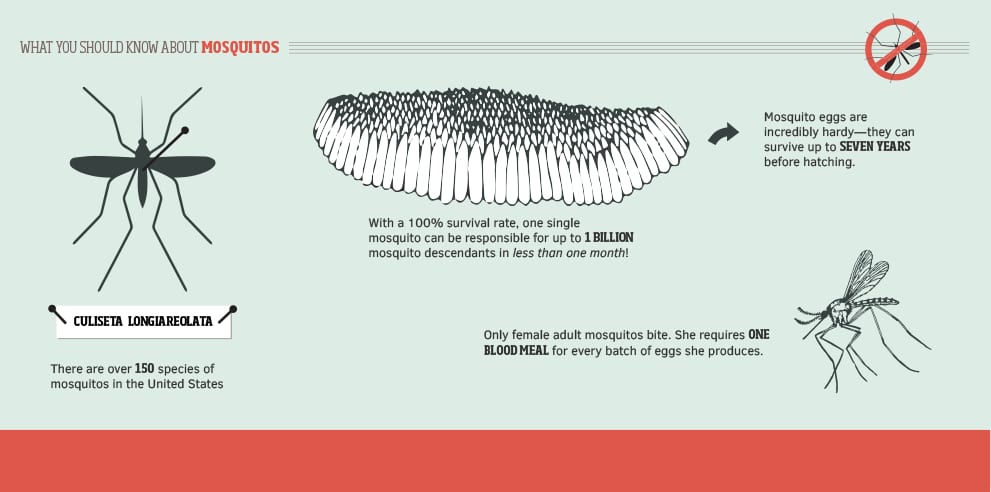 doi: 10.15586/aei.v49i6.448
doi: 10.15586/aei.v49i6.448
[PubMed] [CrossRef] [Google Scholar]
46.
Peng Z, Beckett AN, Engler RJ, Hoffman DR, Ott NL, Simons FER. Immune responses to mosquito saliva in 14 individuals with acute systemic allergic reactions to mosquito bites. J Allergy Clin Immunol (2004) 114(5):1189–94. doi: 10.1016/j.jaci.2004.08.014
[PubMed] [CrossRef] [Google Scholar]
47.
Mohd Adnan K. A review on respiratory allergy caused by insects. Bioinformation (2018) 14(9):540–53. doi: 10.6026/97320630014540
[PMC free article] [PubMed] [CrossRef] [Google Scholar]
48.
Meucci E, Radice A, Fassio F, Iorno MLC, Macchia D. Omalizumab for prevention of anaphylactic episodes in a patient with severe mosquito allergy. Clin Case Rep (2021) 9(10):e04935. doi: 10.1002/ccr3.4935
[PMC free article] [PubMed] [CrossRef] [Google Scholar]
49.
Scala E, Pirrotta L, Uasuf CG, Mistrello G, Amato S, Guerra EC, et al.. Aedes communis reactivity is associated with bee venom hypersensitivity: an in vitro and in vivo study. Int Arch Allergy Immunol (2018) 176(2):101–5. doi: 10.1159/000488866
Int Arch Allergy Immunol (2018) 176(2):101–5. doi: 10.1159/000488866
[PubMed] [CrossRef] [Google Scholar]
50.
Cantillo JF, Puerta L, Lafosse-Marin S, Subiza JL, Caraballo L, Fernandez-Caldas E. Allergens involved in the cross-reactivity of aedes aegypti with other arthropods. Ann Allergy Asthma Immunol (2017) 118(6):710–8. doi: 10.1016/j.anai.2017.03.011
[PubMed] [CrossRef] [Google Scholar]
51.
Cantillo JF, Puerta L, Fernandez-Caldas E, Subiza JL, Soria I, Wöhrl S, et al.. Tropomyosins in mosquito and house dust mite cross-react at the humoral and cellular level. Clin Exp Allergy (2018) 48(10):1354–63. doi: 10.1111/cea.13229
[PubMed] [CrossRef] [Google Scholar]
52.
Kanno H, Onodera H, Endo M, Maeda F, Chida S, Akasaka T, et al.. Vascular lesion in a patient of chronic active Epstein-Barr virus infection with hypersensitivity to mosquito bites: vasculitis induced by mosquito bite with the infiltration of nonneoplastic Epstein-Barr virus-positive cells and subsequent development of natural killer/T-cell lymphoma with angiodestruction. Hum Pathol (2005) 36(2):212–8. doi: 10.1016/j.humpath.2004.11.005
Hum Pathol (2005) 36(2):212–8. doi: 10.1016/j.humpath.2004.11.005
[PubMed] [CrossRef] [Google Scholar]
53.
Washio K, Oka T, Abdalkader L, Muraoka M, Shimada A, Oda M, et al.. Gene expression analysis of hypersensitivity to mosquito bite, chronic active EBV infection and NK/T-lymphoma/leukemia. Leuk Lymphoma (2017) 58(11):2683–94. doi: 10.1080/10428194.2017.1304762
[PubMed] [CrossRef] [Google Scholar]
54.
Suzuki D, Tsuji K, Yamamoto T, Fujii K, Iwatsuki K. Production of proinflammatory cytokines without invocation of cytotoxic effects by an Epstein-Barr virus-infected natural killer cell line established from a patient with hypersensitivity to mosquito bites. Exp Hematol (2010) 38(10):933–44. doi: 10.1016/j.exphem.2010.06.005
[PubMed] [CrossRef] [Google Scholar]
55.
Lee WI, Lin JJ, Hsieh MY, Lin SJ, Jaing TH, Chen SH, et al.. Immunologic difference between hypersensitivity to mosquito bite and hemophagocytic lymphohistiocytosis associated with Epstein-Barr virus infection.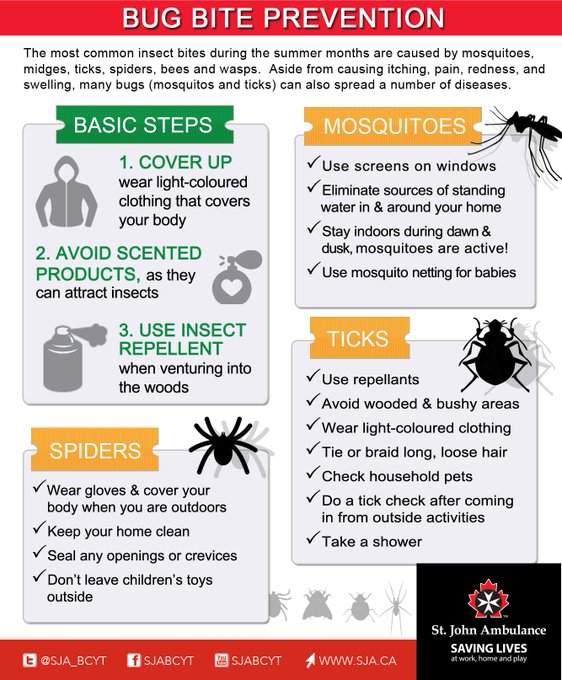 PloS One (2013) 8(10):e76711. doi: 10.1371/journal.pone.0076711
PloS One (2013) 8(10):e76711. doi: 10.1371/journal.pone.0076711
[PMC free article] [PubMed] [CrossRef] [Google Scholar]
56.
Koga C, Sugita K, Kabashima K, Matsuoka H, Nakamura M, Tokura Y. High responses of peripheral lymphocytes to mosquito salivary gland extracts in patients with wells syndrome. J Am Acad Dermatol (2010) 63(1):160–1. doi: 10.1016/j.jaad.2009.08.041
[PubMed] [CrossRef] [Google Scholar]
57.
Barzilai A, Shpiro D, Goldberg I, Yacob-Hirsch Y, Diaz-Cascajo C, Meytes D, et al.. Insect bite-like reaction in patients with hematologic malignant neoplasms. Arch Dermatol (1999) 135(12):1503–7. doi: 10.1001/archderm.135.12.1503
[PubMed] [CrossRef] [Google Scholar]
58.
Wang T, Jia L, Liao W, Chen L, Chen X, Xiong Y, et al.. Primary cutaneous diffuse large b-cell lymphoma, leg type: A study of clinicopathology, immunophenotype and gene rearrangement. Zhonghua Bing Li Xue Za Zhi (2015) 44(2):100–5. [PubMed] [Google Scholar]
59.
Jiamton S, Kaewarpai T, Ekapo P, Kulthanan K, Hunnangkul S, Boitano JJ, et al. . Total IgE, mosquito saliva specific IgE and CD4+ count in HIV-infected patients with and without pruritic papular eruptions. Asian Pac J Allergy Immunol (2014) 32(1):53–9. doi: 10.12932/AP0317.32.1.2014
. Total IgE, mosquito saliva specific IgE and CD4+ count in HIV-infected patients with and without pruritic papular eruptions. Asian Pac J Allergy Immunol (2014) 32(1):53–9. doi: 10.12932/AP0317.32.1.2014
[PubMed] [CrossRef] [Google Scholar]
60.
Rosatelli JB, Roselino AM. Hyper-IgE, eosinophilia, and immediate cutaneous hypersensitivity to insect antigens in the pruritic papular eruption of human immunodeficiency virus. Arch Dermatol (2001) 137(5):672–3. [PubMed] [Google Scholar]
61.
Crisp HC, Johnson KS. Mosquito allergy. Ann Allergy Asthma Immunol (2013) 110(2):65–9. doi: 10.1016/j.anai.2012.07.023
[PubMed] [CrossRef] [Google Scholar]
62.
Diaz JH. Chemical and plant-based insect repellents: Efficacy, safety, and toxicity. Wilderness Environ Med (2016) 27(1):153–63. doi: 10.1016/j.wem.2015.11.007
[PubMed] [CrossRef] [Google Scholar]
63.
Nguyen QD, Vu MN, Hebert AA. Insect repellents: An updated review for the clinician. J Am Acad Dermatol (2018) S0190-9622(18):32824–X. doi: 10.1016/j.jaad.2018.10.053
doi: 10.1016/j.jaad.2018.10.053
[PubMed] [CrossRef] [Google Scholar]
64.
Centers for Disease Control and Prevention . N,N-Diethyl-meta-Toluamide (DEET) – ToxFAQs™. U.S. department of health and human services (2015). Available at: https://www.atsdr.cdc.gov/toxfaqs/tfacts185.pdf.
65.
Zhang X, Zhang T, Ren X, Chen X, Wang S, Qin C. Pyrethroids toxicity to Male reproductive system and offspring as a function of oxidative stress induction: Rodent studies. Front Endocrinol (Lausanne) (2021) 12:656106. doi: 10.3389/fendo.2021.656106
[PMC free article] [PubMed] [CrossRef] [Google Scholar]
66.
Hołyńska-Iwan I, Szewczyk-Golec K. Pyrethroids: How they affect human and animal health? Med (Kaunas) (2020) 56(11):582. doi: 10.3390/medicina56110582
[PMC free article] [PubMed] [CrossRef] [Google Scholar]
67.
Drago B, Shah NS, Shah SH. Acute permethrin neurotoxicity: Variable presentations, high index of suspicion. Toxicol Rep (2014) 1:1026–8. doi: 10.1016/j.toxrep.2014. 09.007
09.007
[PMC free article] [PubMed] [CrossRef] [Google Scholar]
68.
Antwi FB, Shama LM, Peterson RKD. Risk assessments for the insect repellents DEET and picaridin. Regul Toxicol Pharmacol (2008) 51:31–6. doi: 10.1016/j.yrtph.2008.03.002
[PubMed] [CrossRef] [Google Scholar]
69.
Swale DR, Bloomquist JR. Is DEET a dangerous neurotoxicant? Pest Manag Sci (2019) 75(8):2068–70. doi: 10.1002/ps.5476
[PubMed] [CrossRef] [Google Scholar]
70.
Olatunbosun-Oduola A, Abba E, Adelaja O, Taiwo-Ande A, Poloma-Yoriyo K, Samson-Awolola T. Widespread report of multiple insecticide resistance in anopheles gambiae s.l. mosquitoes in eight communities in southern gombe, north-Eastern Nigeria. J Arthropod Borne Dis (2019) 13(1):50–61. [PMC free article] [PubMed] [Google Scholar]
71.
Amelia-Yap ZH, Chen CD, Sofian-Azirun M, Low VL. Pyrethroid resistance in the dengue vector aedes aegypti in southeast Asia: present situation and prospects for management. Parasit Vectors (2018) 11(1):332. doi: 10.1186/s13071-018-2899-0
doi: 10.1186/s13071-018-2899-0
[PMC free article] [PubMed] [CrossRef] [Google Scholar]
72.
Scheinfeld N. Picaridin: A new insect repellent. J Drugs Dermatol (2004) 3(1):59–60. [PubMed] [Google Scholar]
73.
Badawi A, El Halawany M, Latif R. A pilot clinical study on thiamine hydrochloride as a new mosquito repellent: Determination of the minimum effective dose on human skin. Biol Pharm Bull (2020) 43(2):284–8. doi: 10.1248/bpb.b19-00538
[PubMed] [CrossRef] [Google Scholar]
74.
Halawany ME, Latif R, Badawi A. The potential of a site-specific delivery of thiamine hydrochloride as a novel insect repellent exerting long-term protection on human skin: In-vitro, ex-vivo study and clinical assessment. J Pharm Sci (2021) 110(11):3659–69. doi: 10.1016/j.xphs.2021.07.017
[PubMed] [CrossRef] [Google Scholar]
75.
Castilho CJ, Li D, Liu M, Liu Y, Gao H, Hurt RH. Mosquito bite prevention through graphene barrier layers. Proc Natl Acad Sci U S A (2019) 116(37):18304–9. doi: 10.1073/pnas.1906612116
doi: 10.1073/pnas.1906612116
[PMC free article] [PubMed] [CrossRef] [Google Scholar]
76.
Conway MJ. Type I hypersensitivity promotes aedes aegypti blood feeding. Sci Rep (2021) 11(1):14891. doi: 10.1038/s41598-021-94416-w
[PMC free article] [PubMed] [CrossRef] [Google Scholar]
77.
Karppinen A, Brummer-Korvenkontio H, Reunala T, Izquierdo I. Rupatadine 10 mg in the treatment of immediate mosquito-bite allergy. J Eur Acad Dermatol Venereol (2012) 26(7):919–22. doi: 10.1111/j.1468-3083.2012.04543.x
[PubMed] [CrossRef] [Google Scholar]
78.
Karppinen A, Brummer-Korvenkontio H, Petman L, Kautiainen H, Hervé JP, Reunala T. Levocetirizine for treatment of immediate and delayed mosquito bite reactions. Acta Derm Venereol (2006) 86(4):329–31. doi: 10.2340/00015555-0085
[PubMed] [CrossRef] [Google Scholar]
79.
Reunala T, Brummer-Korvenkontio H, Karppinen A, Coulie P, Palosuo T. Treatment of mosquito bites with cetirizine. Clin Exp Allergy (1993) 23(1):72–5. doi: 10. 1111/j.1365-2222.1993.tb02487.x
1111/j.1365-2222.1993.tb02487.x
[PubMed] [CrossRef] [Google Scholar]
80.
Karppinen A, Kautiainen H, Reunala T, Petman L, Reunala T, Brummer-Korvenkontio H. Loratadine in the treatment of mosquito-bite-sensitive children. Allergy (2000) 55(7):668–71. doi: 10.1034/j.1398-9995.2000.00609.x
[PubMed] [CrossRef] [Google Scholar]
81.
Karppinen A, Kautiainen H, Petman L, Burri P, Reunala T. Comparison of cetirizine, ebastine and loratadine in the treatment of immediate mosquito-bite allergy. Allergy (2002) 57(6):534–7. doi: 10.1034/j.1398-9995.2002.13201.x
[PubMed] [CrossRef] [Google Scholar]
82.
Yosipovitch G, Duque MI, Fast K, Dawn AG, Coghill RC. Scratching and noxious heat stimuli inhibit itch in humans: a psychophysical study. Br J Dermatol (2007) 156(4):629–34. doi: 10.1111/j.1365-2133.2006.07711.x
[PubMed] [CrossRef] [Google Scholar]
83.
Yosipovitch G, Fast K, Bernhard JD. Noxious heat and scratching decrease histamine-induced itch and skin blood flow. J Invest Dermatol (2005) 125(6):1268–72.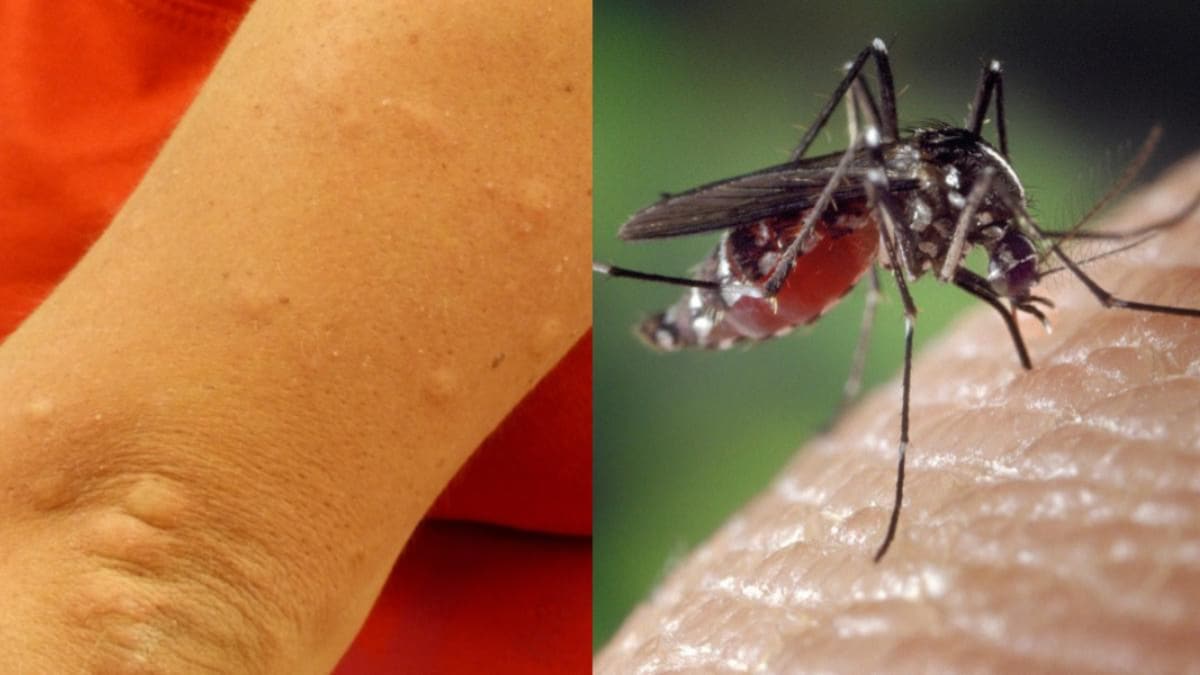 doi: 10.1111/j.0022-202X.2005.23942.x
doi: 10.1111/j.0022-202X.2005.23942.x
[PubMed] [CrossRef] [Google Scholar]
84.
Müller C, Großjohann B, Fischer L. The use of concentrated heat after insect bites/stings as an alternative to reduce swelling, pain, and pruritus: an open cohort-study at German beaches and bathing-lakes. Clin Cosmet Investig Dermatol (2011) 4:191–6. doi: 10.2147/CCID.S27825
[PMC free article] [PubMed] [CrossRef] [Google Scholar]
85.
Evaluation of automatic class III designation (de novo) for zap-it! . Available at: https://www.accessdata.fda.gov/cdrh_docs/reviews/DEN100024.pdf (Accessed January 29, 2022).
86.
Palkar R, Ongun S, Catich E, Li N, Borad N, Sarkisian A, et al.. Cooling relief of acute and chronic itch requires TRPM8 channels and neurons. J Invest Dermatol (2018) 138(6):1391–9. doi: 10.1016/j.jid.2017.12.025
[PMC free article] [PubMed] [CrossRef] [Google Scholar]
87.
Hill N, Stam C, Tuinder S, van Haselen RA. A placebo controlled clinical trial investigating the efficacy of a homeopathic after-bite gel in reducing mosquito bite induced erythema.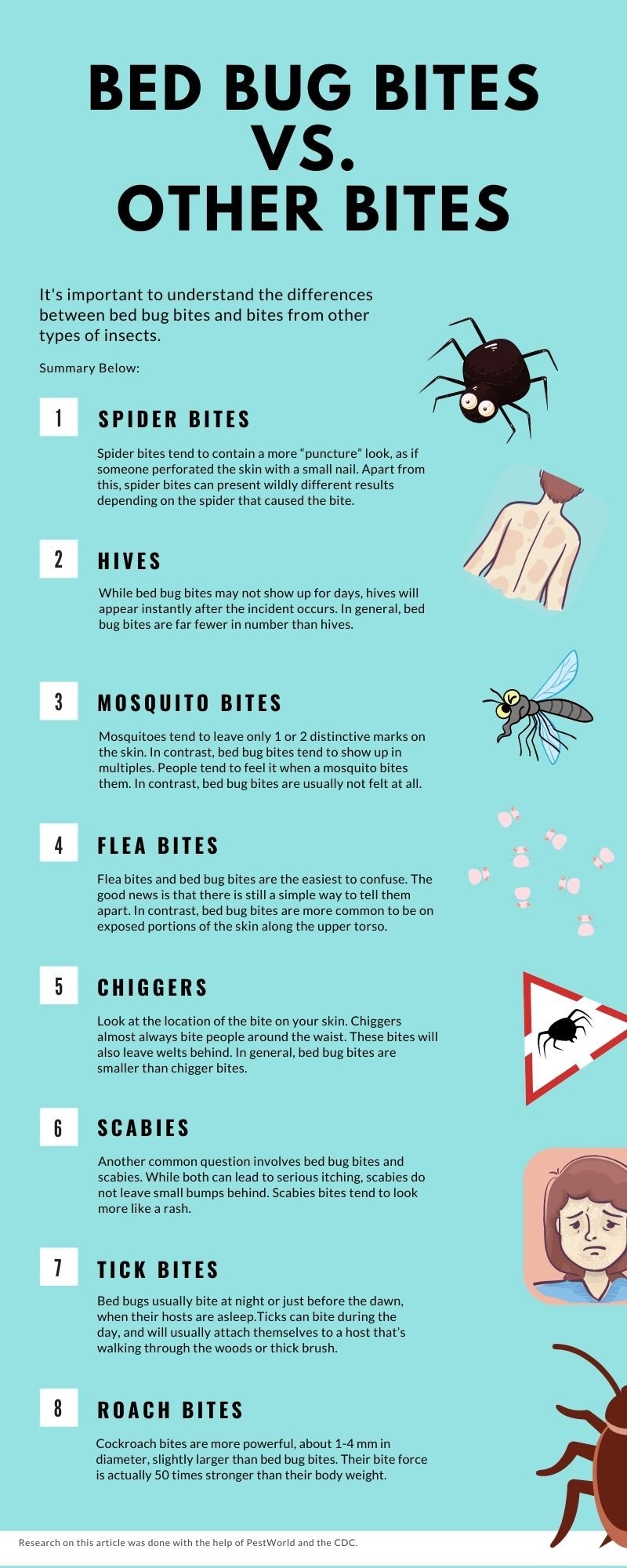 Eur J Clin Pharmacol (1995) 49:103–8. doi: 10.1007/BF00192367
Eur J Clin Pharmacol (1995) 49:103–8. doi: 10.1007/BF00192367
[PubMed] [CrossRef] [Google Scholar]
88.
Srivastava D, Singh BP, Sudha VT, Arora N, Gaur SN. Immunotherapy with mosquito (Culex quinquefasciatus) extract: a double-blind, placebo-controlled study. Ann Allergy Asthma Immunol (2007) 99(3):273–80. doi: 10.1016/S1081-1206(10)60664-3
[PubMed] [CrossRef] [Google Scholar]
89.
McCormack DR, Salata KF, Hershey JN, Carpenter GB, Engler RJ. Mosquito bite anaphylaxis: immunotherapy with whole body extracts. Ann Allergy Asthma Immunol (1995) 74(1):39–44. [PubMed] [Google Scholar]
90.
Tager A, Lass N, Gold D, Lengy J. Studies on Culex pipiens molestus in Israel. Int Arch Allergy Immunol (1969) 36:408–14. doi: 10.1159/000230761
[PubMed] [CrossRef] [Google Scholar]
91.
Benaim-Pinto C, Fassrainer A. Intradermal immunotherapy in children with severe skin inflammatory reactions to aedes aegypti and culex quinquefasciatus mosquito bites. Int J Dermatol (1990) 29(8):600–1. doi: 10.1111/j.1365-4362.1990.tb03479.x
doi: 10.1111/j.1365-4362.1990.tb03479.x
[PubMed] [CrossRef] [Google Scholar]
92.
Manrique MA, González-Díaz S, Arias-Cruz A, Hernandez M, Gallego C, Garcia-Calderin D, et al.. Efficacy of immunotherapy with allergenic extract of aedes aegypti in the treatment of Large local reaction to mosquito bites in children. World Allergy Organ J (2012) 5(2):164. doi: 10.1097/01.WOX.0000411578.60734.e0
[CrossRef] [Google Scholar]
93.
Ridolo E, Montagni M, Incorvaia C, Senna G, Passalacqua G. Orphan immunotherapies for allergic diseases. Ann Allergy Asthma Immunol (2016) 116(3):194–8. doi: 10.1016/j.anai.2015.12.031
[PubMed] [CrossRef] [Google Scholar]
94.
McCracken MK, Christofferson RC, Grasperge BJ, Calvo E, Chisenhall DM, Mores CN. Aedes aegypti salivary protein “aegyptin” co-inoculation modulates dengue virus infection in the vertebrate host. Virology (2014) 468-470:133–9. doi: 10.1016/j.virol.2014.07.019
[PMC free article] [PubMed] [CrossRef] [Google Scholar]
95.
Schneider BS, Soong L, Coffey LL, Stevenson HL, McGee CE, Higgs S. Aedes aegypti saliva alters leukocyte recruitment and cytokine signaling by antigen-presenting cells during West Nile virus infection. PloS One (2010) 5:e11704. doi: 10.1371/journal.pone.0011704
[PMC free article] [PubMed] [CrossRef] [Google Scholar]
96.
Manning JE, Morens DM, Kamhawi S, Valenzuela JG, Memoli M. Mosquito saliva: The hope for a universal arbovirus vaccine? J Infect Dis (2018) 218(1):7–15. doi: 10.1093/infdis/jiy179
[PMC free article] [PubMed] [CrossRef] [Google Scholar]
97.
Pingen M, Bryden SR, Pondeville E, Schnettler E, Kohl A, Merits A, et al.. Host inflammatory response to mosquito bites enhances the severity of arbovirus infection. Immunity (2016) 44:1455–69. doi: 10.1016/j.immuni.2016.06.002
[PMC free article] [PubMed] [CrossRef] [Google Scholar]
98.
Manning JE, Oliveira F, Coutinho-Abreu IV, Herbert S, Meneses C, Kamhawi S, et al.. Safety and immunogenicity of a mosquito saliva peptide-based vaccine: a randomised, placebo-controlled, double-blind, phase 1 trial. Lancet (2020) 395(10242):1998–2007. doi: 10.1016/S0140-6736(20)31048-5
Lancet (2020) 395(10242):1998–2007. doi: 10.1016/S0140-6736(20)31048-5
[PMC free article] [PubMed] [CrossRef] [Google Scholar]
Insect allergy or allergy to mosquitoes
Home- What we treat- Author’s articles on diseases- Celiac diseases and their treatment
11/30/20
In the summer, we are all annoyed by annoying buzzing, and then bites of tiny vampires.
A short-term reaction to mosquito bites in the form of redness, local swelling and irritating itching of the skin occurs in almost all people. It is provoked by biologically active substances contained in the saliva of insects, and promote blood flow to the bite site.
Children and allergic individuals may develop allergic reactions to biologically active proteins ingested by mosquito bites. Among the 12 studied proteins, tropomyasin contained in mosquito saliva has the highest allergenic activity.
Allergic reactions that occur are more often local in nature: swelling of up to 10 cm or more occurs at the site of the bite, lasting from several hours to several days, accompanied by severe itching, sometimes pain. Rashes may occur around the bite site.
Rashes may occur around the bite site.
Systemic (generalized) reactions of the body to mosquito bites are complicated by the addition of such symptoms as: urticaria, diarrhea, vomiting, abdominal pain, asthma attacks, dry mouth, malaise, swollen lymph nodes. Multiple bites may be accompanied by chills and high fever.
IN THE EVENT OF GENERALIZED REACTIONS OR EXTENSION OF LOCAL REACTIONS, AFTER EACH MOSQUITO BITE, YOU SHOULD SEE A DOCTOR-ALLERGIST.
URGENTLY CALL an ambulance in case of:
- Swelling and redness of the skin spreading over the whole body;
- With the addition of dizziness, nausea, vomiting, shortness of breath, suffocation, severe weakness.
Individuals who have experienced allergic reactions in the form of angioedema or anaphylactic shock in the past should always carry medication to relieve these dangerous forms of allergic reactions.
Diagnosis of allergy to all types of mosquito antigens (allergens) is carried out by allergists.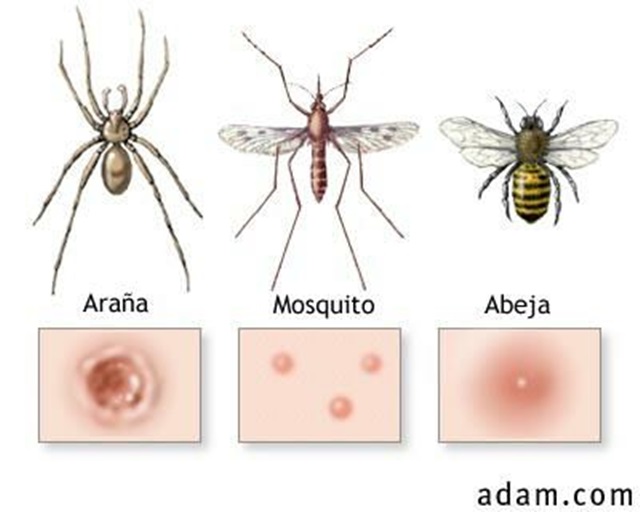 In the presence of appropriate indications, allergen-specific immunotherapy is carried out, which helps to reduce sensitivity to mosquito allergens.
In the presence of appropriate indications, allergen-specific immunotherapy is carried out, which helps to reduce sensitivity to mosquito allergens.
The easiest and most reliable way to prevent allergic reactions is to AVOID CONTACT with allergens.
If you are allergic to mosquitoes, you should:
- Avoid staying at certain times of the day in parks, forests, especially near ponds and swamps, swim in ponds with stagnant water;
- Mosquito nets, fumigators, ultraviolet, electric, etc. mosquito traps should be used;
- Apply repellents – means for impregnating clothes, sprays, lotions before going outside;
- In case of mass penetration of insects into the dwelling from the basement, call specialists for sanitization.
WHAT TO DO AFTER A BITE:
- Wash the bite with cold water and soap and treat with an antiseptic;
- Apply ice to bite to reduce swelling;
- Use antihistamine ointments and gels (Fenistil) to reduce local reaction;
In case of severe local reactions or symptoms of a generalized manifestation of allergy, take antihistamines by mouth and consult a doctor as soon as possible.
symptoms, causes. Treatment at the Fantasy clinic in Moscow
We treat children according to the principles of evidence-based medicine: we choose only those diagnostic and treatment methods that have proven their effectiveness. We will never prescribe unnecessary examinations and medicines!
Make an appointment via WhatsApp
Prices
Doctors
The first children’s clinic of evidence-based medicine in Moscow
No unnecessary examinations and medicines! We will prescribe only what has proven effective and will help your child.
Treatment according to world standards
We treat children with the same quality as in the best medical centers in the world.
The best team of doctors in Fantasy!
Pediatricians and subspecialists Fantasy – highly experienced doctors, members of professional societies. Doctors constantly improve their qualifications, undergo internships abroad.
Ultimate treatment safety
We made pediatric medicine safe! All our staff work according to the most stringent international standards JCI
We have fun, like visiting best friends
Game room, cheerful animator, gifts after the reception.
